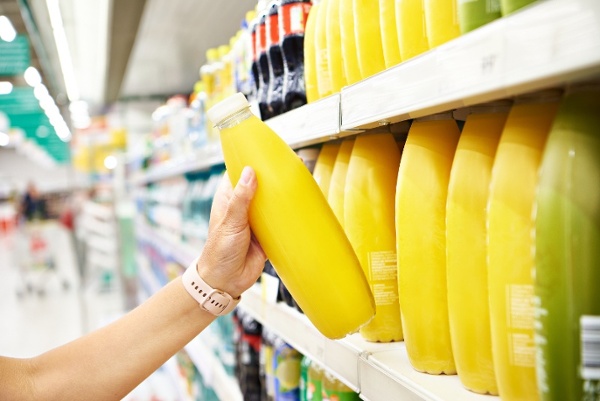Process Challenges in Juice Production
Most liquid materials of products used in the food processing industry can be characterized as being highly heterogeneous in regards to both the content and quality of particles making up the system. The size and distribution of particles in a dispersed phase of a liquid mixture determine the stability of the system, and its rheological properties, and in the case of emulsions, it can affect their microbiological stability.
Fruit and Vegetable Juice Production
In the production of fruit and vegetable juices that have a percentage of pomace content (i.e. solid remains or pulp of fruit after pressing for juice), it's common to use a pressure/valve homogenizer to decrease the particle size of the dispersed solids and provide improved stability against separation. In many food products increased viscosity can be used to counteract the settling rate of dispersed solids, but in the case of fruit and vegetable juice, an increase in viscosity would add undesirable mouth-feel and taste to the drink. Therefore, juice homogenization is critical to increasing the degree of product uniformity and storage stability, with the added benefit of improving smell and taste.
High-Pressure Homogenizer Displacement
Although pressure/valve homogenizers can produce the desired end result in the production of fruit and vegetable juices, the use of this technology suffers from a few common problems.
Common Problems:
- The high pressure (typically ~1000 – 2000psi for juice processing) fluid velocity, and solid content passing through a valve homogenizer cause excessive wear in the homogenizing slot.
- Valve head and seat surfaces, depending on the type of juice can occur after only a few hours of operation.
- Reciprocating piston/plunger pumps consume large amounts of power in order to produce the pressure and flow necessary for homogenization.
- Depending on the selected model of homogenizer, high capital investment in excess of $150,000 may be required.
Juice Production Solutions
The Quadro® HV-Emulsifier defines new limits in shear energy and closes the gap in performance between traditional in-line mixers and pressure/valve homogenizers. With unique high-velocity rotor technology, the HV-Emulsifier can generate more than 30x the disruptive forces of a traditional rotor-stator mixer without the excessive wear and maintenance common to a valve homogenizer. Fine particle sizes extending into submicron distributions can now be homogeneously dispersed in fruit and vegetable juices without the use of high-pressure technology.
Emulsifying Equipment for Juice Production
The Quadro® HV-Emulsifier produces fine pomace juice dispersions to improve stability, smell, and taste while providing increased capacity and a lower-cost alternative to high-pressure technology.

Topics:
Emulsification
